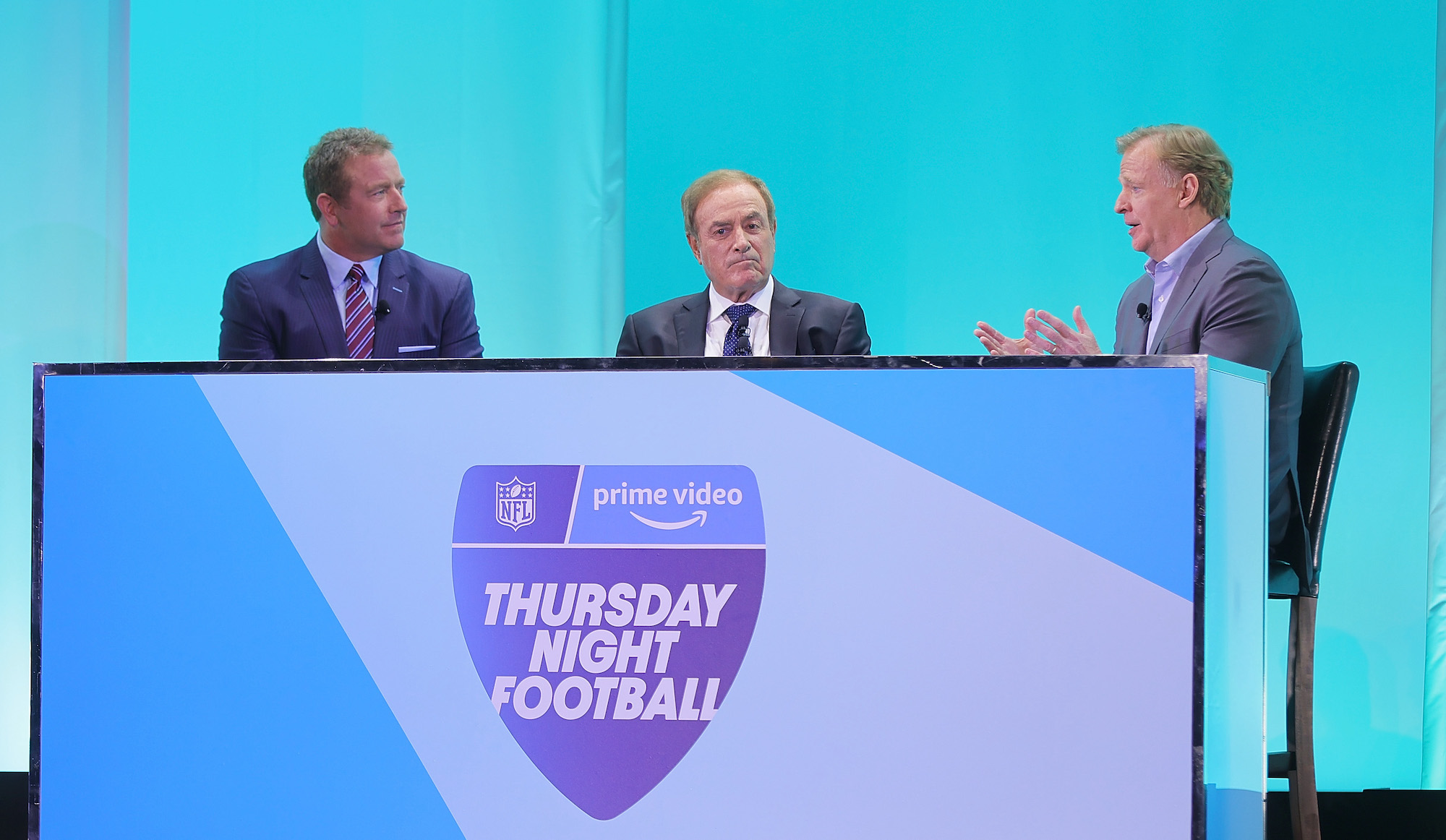Amazon Shows Off All Its Tributaries in NewFronts Flood of Streaming Offerings (Bloom)
Just imagine Black Friday kicking off on Amazon alongside Turkey Day’s evening game. How much will brands pay for the chance to be in the middle of both the biggest show on TV and the biggest selling day in retail?

Amid all the sturm und drang after The Great Netflix Correction and CNN Plus’ hasty demise, it’s easy to forget that at least one streaming-video operator is ready for the fast-evolving video future filled with ads.

That operator is Amazon, which used its session at this week’s NewFronts advertising confab to showcase all the ways it can help brands separate customers from their cash.
That matters because last month’s ugly comeuppance made it clear that even broad-based media companies better have an ad-based component if they want to reach the broadest, most lucrative potential audience.
The event at New York’s Lincoln Center provided plenty for marketers to drool over, even if few of Amazon’s announcements count as “new.” But the imposing lineup certainly made Amazon’s point very clear: it’s ready for what’s next.
The list of attractions is notable: the new NFL deal kicking off this fall; FAST service Freevee with new originals (including some Disney action movies) and more channels; live-streaming beast Twitch rolling out new ways for brands to partner with its creators; virtual product placement tech, to digitally insert branded material into a scene; and the Amazon Marketing Cloud, the web giant's “end-to-end planning, measurement and optimization solution.”
That’s a lot, especially for a company known more for e-commerce, grocery stores, pharmacies and a whole bunch of other stuff. And though I despise the term, the synergies here can be huge.
For instance, with Amazon exclusively taking over NFL Thursday night games this season, just imagine Black Friday kicking off on Amazon alongside Turkey Day’s evening game. How much will brands pay for the chance to be in the middle of both the biggest show on TV and the biggest selling day in retail?
NEXT TV NEWSLETTER
The smarter way to stay on top of the streaming and OTT industry. Sign up below.
As for the virtual product placement tech, Henrik Bastin, executive producer of Freevee original Bosch: Legacy, called the digital technology a “game-changer” for creators and brands.
For one thing, it’ll simplify the laborious process of getting product placement deals done. Instead of spending time lining those projects up before the cameras roll, the show can be produced, and the product placement figured out later.
And any subsequent deal doesn’t have to be forever. The branded material can be changed after a couple of years, a gift that keeps giving.
Don’t forget that just-closed $8.45 billion deal for MGM’s 4,000 movies and 17,000 hours of TV episodes. Those should begin filtering onto Freevee, Prime and even Twitch soon enough, giving viewers more reasons to watch, and more marketers reason to buy time.
More generally, don’t forget that Amazon already generated $31.2 billion in ad revenue last year, behind only Facebook and Alphabet as the biggest online advertising site. More streaming ad inventory will only grow that huge number for what is, basically, a side hustle.
Oh, sure, other media companies trotted out noteworthy initiatives these past few weeks, too.
Comcast announced an intriguing joint venture built around afterthought streaming service Xumo, giveaway hardware Flex, its line of branded Smart TVs, and $900 million from cable colleague Charter Spectrum.
The JV could turn into something, maybe, eventually. Some observers are more enthusiastic than I about its prospects. I consider it a long-term play in a declining business, one last shot to capture cord-cutters on their way out the door. But it leverages a lot of existing assets in a smart way though, and for that the companies deserve some credit.
The JV does give Xumo and Peacock more reach, into Charter territory for one, and possibly far beyond as some customers move to areas not served by either and take the equipment and relationships with them.
The companies will have to convert fully to Internet Protocol delivery of their programming, which will save on bandwidth and may enable other ventures.
And, possible big bonus long term, the JV’s new service may kneecap quasi-competitors such as Roku, TCL, Google TV and Vizio, providing low-end consumers with an attractive hardware alternative from a TV provider they already know.
All told, it represents yet another innovative partnership for the creatively accretive Brian Roberts, who once again is getting bigger and broader without causing antitrust hawks to circle overhead.
Another competitor, Paramount Global, said it’s heading to some big international markets, beefing up ad-supported offerings with a new Lionsgate deal, and unveiling its version of virtual product placement, called In-Scene Ads.
But those offerings feel just a tad undernourished next to everything Amazon can put together when it focuses on something other than unionization campaigns, or which Whole Foods outlets to close.
The company also still has Amazon Prime Video and that lucrative Prime Video Channels offering, where it scrapes billions of dollars in fees from the dozens of subscription services available there.
But streaming’s evolving reality means any competitor better have a sturdy ad-based option to reach the broadest possible audience, and generate the most revenue. Even Netflix is bowing to reality after years of dissing ad-supported offerings.
The problem for Netflix, and for other competitors, is that Amazon remains in, er, prime position to scoop up billions more in ad revenue while they’re all still figuring out this new part of their businesses. This week’s presentation was just a detailed reminder of the many ways Amazon will do that.
David Bloom of Words & Deeds Media is a Santa Monica, Calif.-based writer, podcaster, and consultant focused on the transformative collision of technology, media and entertainment. Bloom is a senior contributor to numerous publications, and producer/host of the Bloom in Tech podcast. He has taught digital media at USC School of Cinematic Arts, and guest lectures regularly at numerous other universities. Bloom formerly worked for Variety, Deadline, Red Herring, and the Los Angeles Daily News, among other publications; was VP of corporate communications at MGM; and was associate dean and chief communications officer at the USC Marshall School of Business. Bloom graduated with honors from the University of Missouri School of Journalism.

